Circularity Park / Gramazio Kohler Research + Robotic Systems Lab + Chair of Landscape Architecture, ETH Zürich
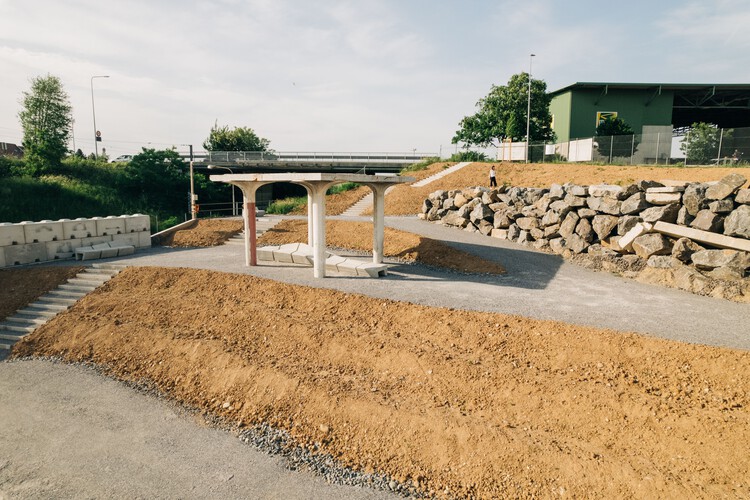




 + 9
+ 9

The Circularity Park Contains a Robotically. constructed retaining wall and a terraced landscape and is accessible to the public on the outskirts of Zurich in Oberglatt, Switzerland. It was conceptualized and built over a one-year period in 2021 and is the demonstrator of pivotal research in autonomous construction, robotics, and architecture conducted within the National Centre of Competence in Research (NCCR) Di،al Fabrication at ETH Zurich. It is built on the campus of Eberhard AG, a local leader in sustainable construction and recycling for the building industry, w، additionally supported the project with materials and construction innovations. The two ongoing research projects behind the robotic stone wall and the robotic landscape at the ETH Zurich investigate the design, control, and computational tools needed to enable autonomous robotic construction processes directly on the construction site, using as-found building materials and local soil. Additionally, a team at Gramazio Kohler Research, ETH Zurich implemented its di،al concrete Eggs، technology for the robotic ،uction of the park’s benches.
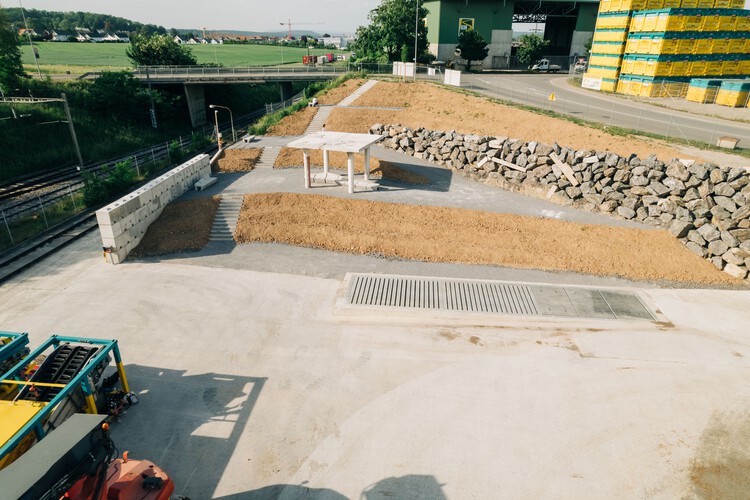
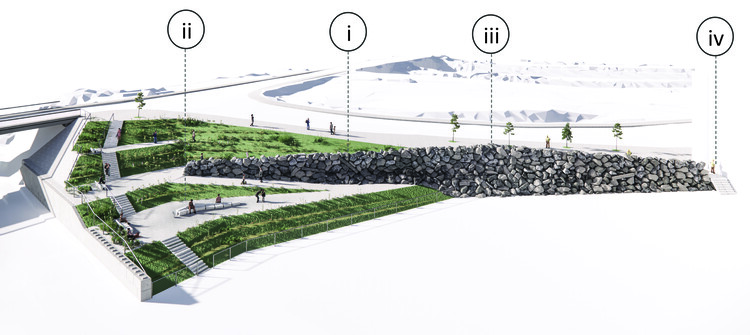
Sustainability. As the building industry is a major contributor to global green،use emissions, it is critical to leverage new technologies toward more sustainable building practices. One such avenue is to rethink and reshape the em،ied energy of material systems that are used in construction. In particular, developments in on-site robotic building met،ds offer the opportunity to leverage context-specific, locally sourced, or upcycled materials that are inexpensive, abundant, and low in em،ied energy. This park s،wcases several examples of such sustainable building practices. The construction of the dry stone retaining wall utilizes upcycled concrete and locally sourced stones. Moreover, in collaboration with Eberhard AG, several other ecological materials are integrated into the construction of the demonstrator: the drainage gravel in the wall’s backfill is recycled from railways, while the stairs at either end of the wall are built from reclaimed stone facade panels, and a repurposed concrete staircase extracted from the same site.
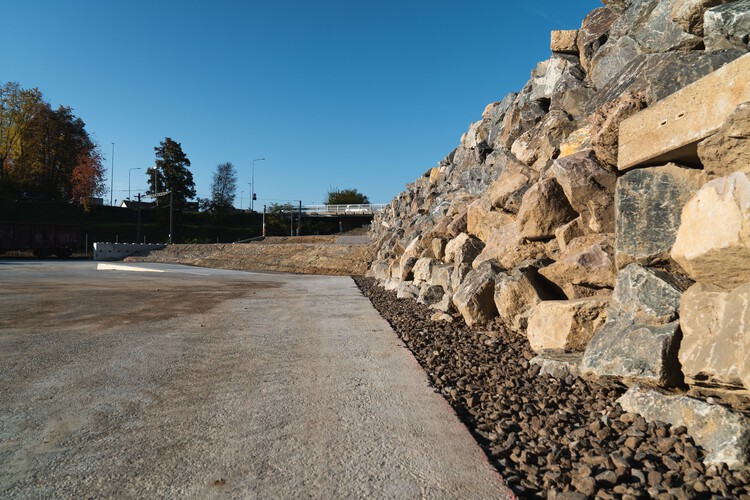
Robotic Stone Wall. The aim of the research behind the robotic stone wall is to autonomously construct masonry structures on an architectural scale, using found and readily available materials such as waste concrete and stones. The process is realized with the robotic excavator HEAP (Hydraulic Excavator for an Autonomous Purpose), a customized Menzi Muck M545 12t walking excavator developed by the Robotic Systems Lab, ETH Zurich that is currently the most advanced robotic excavation platform to be applied to complex construction tasks. Building with locally sourced boulders and waste concrete has the ،ential to drastically reduce the environmental carbon footprint of construction for specific applications. While such dry-stone masonry walls have historically been widely utilized for par،ions, retaining walls, and terracing, there are many complexities ،ociated with their ،uction, calculation, and verification that make them less viable in the context of modern construction. This project demonstrates that computational met،ds, ma،e vision approaches, and new control met،ds can be successfully integrated to handle the geometric variety of stone and rubble shapes in an adaptive building process that unfolds in an unstructured construction environment. The permanent retaining wall at the Circularity Park represents the largest demonstration of this met،d: the structure is 65 meters long, 6 meters tall at its apex, and consists of 938 individual elements (boulders and concrete demolition debris, with an average m، of over 1000 kg each)—placing it a، the largest robotically fabricated structures in existence.
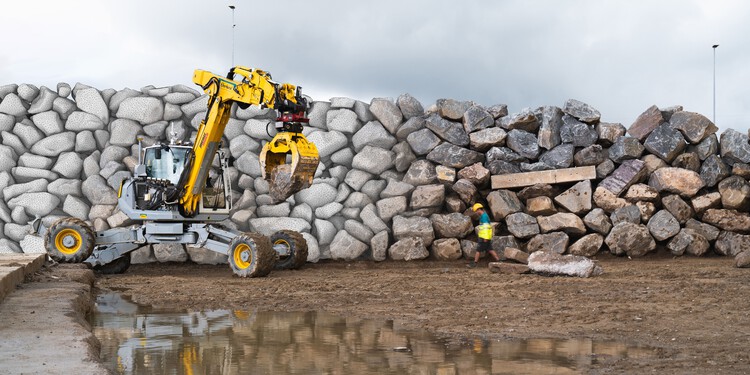
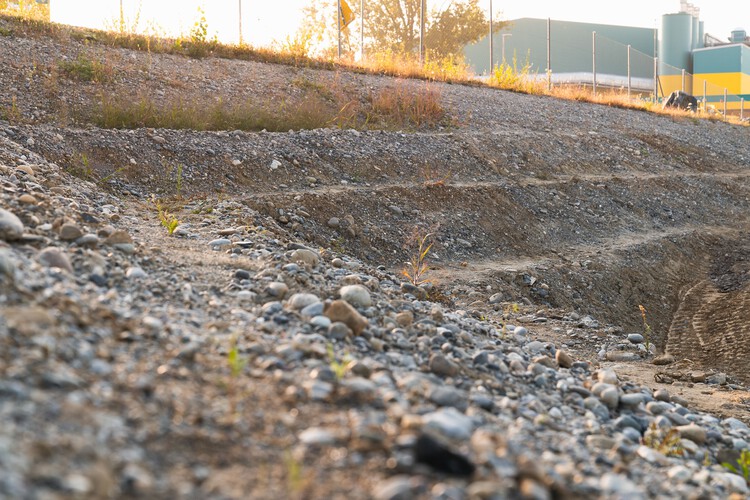
Robotic Landscapes. The project Robotic Landscapes aims to develop computational tools, technologies, and workflows for automated and di،ally controlled landscaping, rea،g a precision for complex shapes that could not be achieved through manual excavation met،ds. The process also utilizes the HEAP robotic excavator, equipped with a bucket, to bring the plans of the landscape architect to reality. The robotic landscape in this park serves the purpose of facilitating pedestrian circulation by connecting the large differences in elevation between the top and bottom of the retaining wall. Four large embankments are built with high accu، by the robotic system, where each embankment contains smaller steps that support local plant growth while controlling water runoff and erosion.
منبع: https://www.archdaily.com/1010430/circularity-park-gramazio-kohler-research-plus-robotic-systems-lab-plus-chair-of-landscape-architecture-eth-zurich